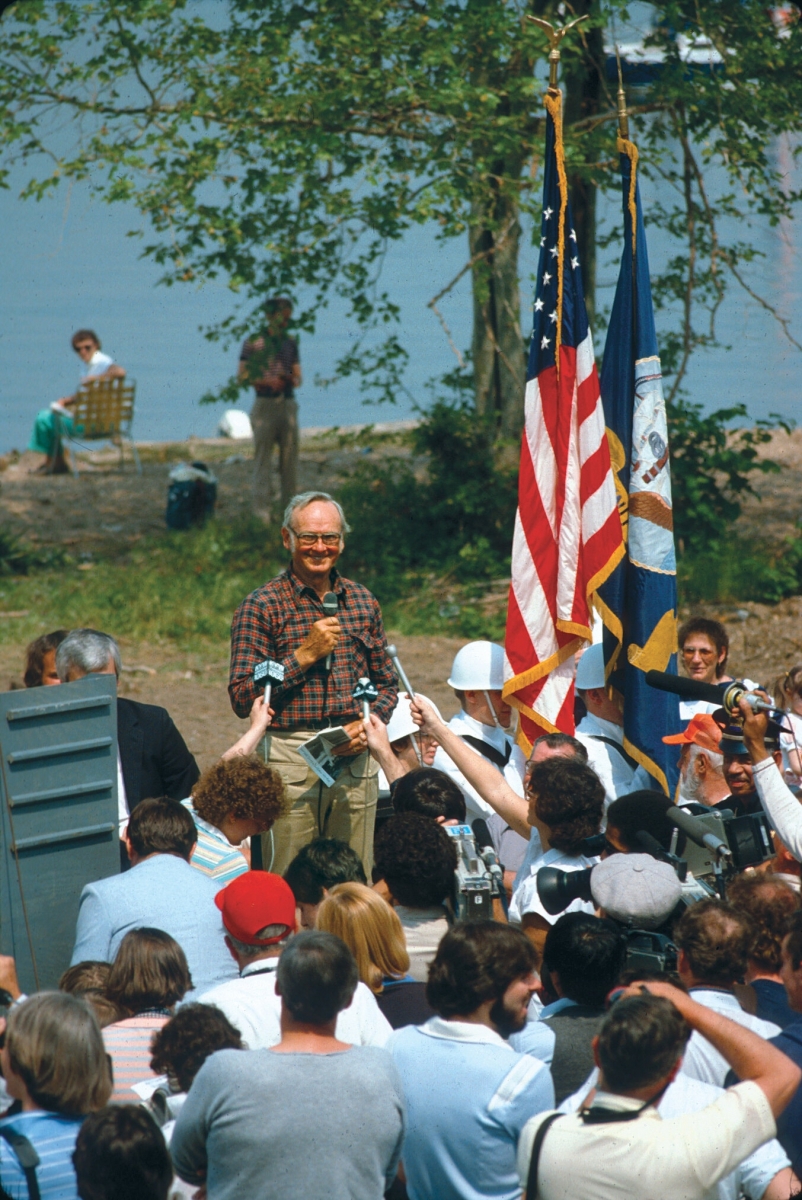Marvin Creamer, a sailor who performed a seemingly miraculous circumnavigation in the mid-1980s, has crossed the bar for the last time. A former geography professor at Rowan University in New Jersey, Creamer died on Aug. 12 at age 104. Born in 1916, Creamer was long associated with Glassboro State College in New Jersey (later renamed to Rowan). He received his undergraduate degree from the school and later founded a chair in geography there in 1970.
Creamer was also a sailor, and he melded his interest in geography and sailing to dive deep into the science and the art of navigation. From an early age, Creamer was interested in observational navigation techniques — famously used, for example, by Polynesian navigators who made long voyages in the Pacific without sextant, timepiece or compass. Creamer eventually mastered these techniques so well that he tried them on passages in the Atlantic. He made several trans-Atlantic voyages and became confident he could do something even bigger.
Creamer decided, at age 66, to do a circumnavigation aboard his 36-foot sloop Globe Star. There would be no sextant, no compass, no watch or radio at the nav station (actually, per his wife Blanche's request, those items were in a sealed case below deck in case of emergency but were never needed). The navigation equipment Creamer used was all in his head.
He had absorbed the techniques of instrumentless navigators and come up with some of his own. His approach used everything available — from keying on the rising, transit and setting of stars, to noting mundane and seemingly random data like wind direction, wave direction, the color and temperature of the water, the types of weed floating in it, and the sea, bird and even insect life visible at any moment. The essence of Creamer's method was based on what all traditional navigators do: They observe with a fierce intensity. The saying that no navigator relies on a single source of information is based on this age-old concept of continually assembling every available bit of data into a mosaic of position and course. Another tenet of this approach, well known to an experienced ocean sailor like Creamer, is that once one is at sea, there isn't any real need to know one's position to the 30-meter-or-better accuracy of GPS. Ten miles is good enough when surrounded by deep water and no hazards.
Creamer's circumnavigation started from Cape May, N.J., in December 1982 and proceeded to Cape Town; Hobart, Tasmania; Sydney, Australia; Whangara, New Zealand; the Falkland Islands, and back to Cape May. The crew of Globe Star returned on May 17, 1984, to a hero's welcome. Creamer, possessed with the wry humor of one talented at observing the world, reportedly called the voyage, "…a jolly romp."
In the process, Creamer went down in the record books as the first sailor to circumnavigate without instruments of any kind (though he did have an hourglass on board to time watch changes!). In this age of satellite navigation and satellite communications, it seems Creamer's astounding feat may never be seconded.
Below, Creamer's return in May 1984, courtesy Rowan University.
 |

